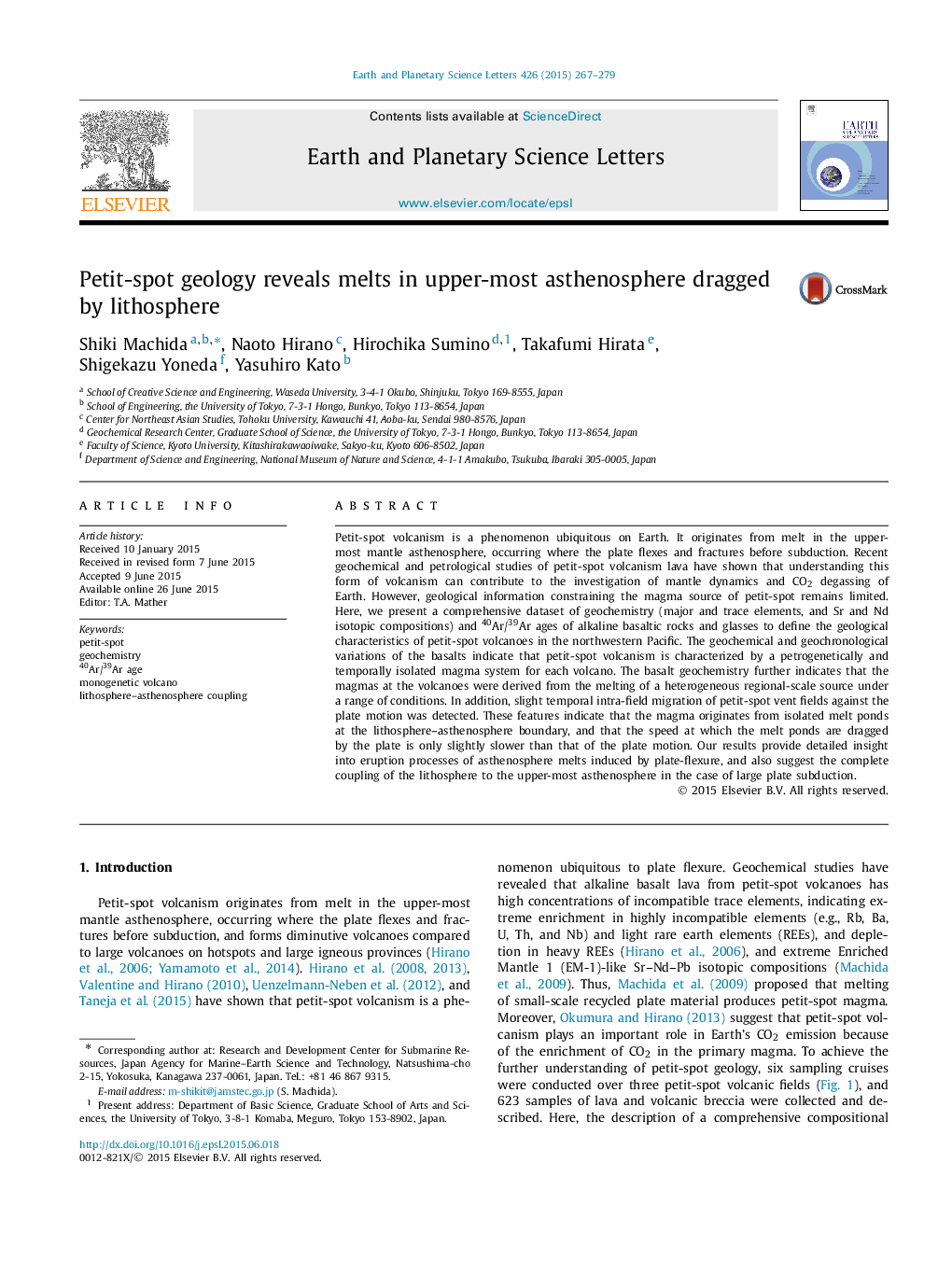| Article ID | Journal | Published Year | Pages | File Type |
|---|---|---|---|---|
| 6428144 | Earth and Planetary Science Letters | 2015 | 13 Pages |
â¢Geochemical and geochronological data set of petit-spot in the NW Pacific is shown.â¢Three basalt groups are identified on the basis of trace element signature.â¢Magma systems for each volcano are petrogenetically and temporally isolated.â¢The magma originates from the melt ponds at the lithosphere-asthenosphere boundary.â¢Plate-dragged motion of the melt ponds is slightly slower than the plate motion.
Petit-spot volcanism is a phenomenon ubiquitous on Earth. It originates from melt in the upper-most mantle asthenosphere, occurring where the plate flexes and fractures before subduction. Recent geochemical and petrological studies of petit-spot volcanism lava have shown that understanding this form of volcanism can contribute to the investigation of mantle dynamics and CO2 degassing of Earth. However, geological information constraining the magma source of petit-spot remains limited. Here, we present a comprehensive dataset of geochemistry (major and trace elements, and Sr and Nd isotopic compositions) and 40Ar/39Ar ages of alkaline basaltic rocks and glasses to define the geological characteristics of petit-spot volcanoes in the northwestern Pacific. The geochemical and geochronological variations of the basalts indicate that petit-spot volcanism is characterized by a petrogenetically and temporally isolated magma system for each volcano. The basalt geochemistry further indicates that the magmas at the volcanoes were derived from the melting of a heterogeneous regional-scale source under a range of conditions. In addition, slight temporal intra-field migration of petit-spot vent fields against the plate motion was detected. These features indicate that the magma originates from isolated melt ponds at the lithosphere-asthenosphere boundary, and that the speed at which the melt ponds are dragged by the plate is only slightly slower than that of the plate motion. Our results provide detailed insight into eruption processes of asthenosphere melts induced by plate-flexure, and also suggest the complete coupling of the lithosphere to the upper-most asthenosphere in the case of large plate subduction.
Graphical abstractDownload high-res image (92KB)Download full-size image
